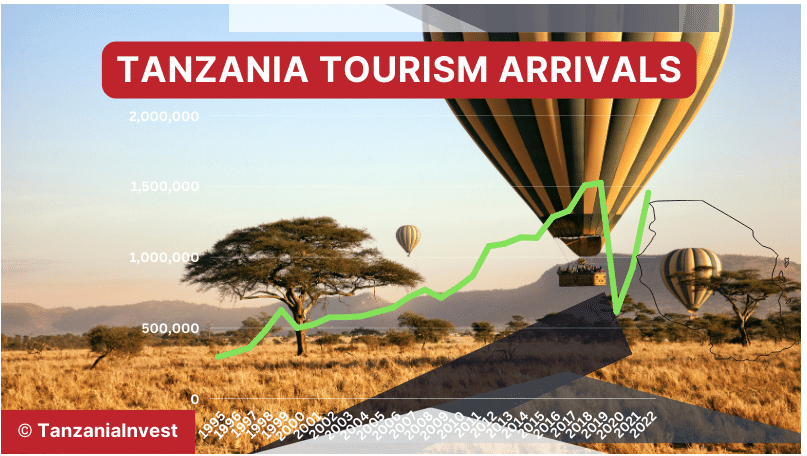The Bank of Tanzania (BOT) released its Monthly Economic Review-March 2023 which covers key macroeconomic indicators for the year ending February 2023. read more by following the link below;
https://www.tanzaniainvest.com/tourism/economic-review-february-2023
External Sector Performance
The external sector of the economy continued to experience challenges endured by high inflation coupled with the effects of the war in Ukraine. As a result, the current account recorded a deficit of USD 5,294.5 million in the year ending February 2023 compared with a deficit of USD 2,744.3 million recorded in the corresponding period in 2022.
The overall balance of payments also had a deficit balance of USD 1,294.2 million compared with a surplus of USD 801.9 million in the year to February 2022. The stock of foreign exchange reserves declined to USD 4,577.1 million at the end of February 2023 from USD 5,858.6 million at the end of February 2022. The reserves were sufficient to cover 4.1 months of imports, in line with the country benchmark of at least 4 months.
Exports Exports of goods and services increased to USD 12,383.1 million in the year ending February 2023 from USD 10,202.1 million in the corresponding period in 2022, mostly driven by non-traditional exports (particularly minerals and manufactured goods), and services receipts, mainly tourism. A notable increase was registered in the exports of minerals, particularly gold, coal, and diamonds.
Coal exports grew significantly to USD 228.6 million from USD 23.2 million, owing to heightened demand for an alternative source of energy following supply disruptions stemming from the war in Ukraine. RELATED: Tanzania Meat Exports Grew by +125% in November 2022 Thanks to World Cup Exports of diamonds were USD 66.9 million, higher than USD 9.6 million in the year to February 2022, following improved production coupled with an increase in prices in the world market. Meanwhile, gold exports registered an annual increase of 7% to USD 2,859.6 million, on account of both volume and price effects. Likewise, the export of manufactured goods increased by 19.9% to USD 1,490.2 million, largely driven by fertilizer, iron and steel, and cement.
Traditional Exports Traditional exports also increased to USD 748.7 million in the year to February 2023, from USD 687 million in the similar period in 2022, following the improved performance of all traditional crop exports, save for cloves. On monthly basis, traditional exports amounted to USD 47.4 million compared with USD 53.4 million in February 2022. Non-traditional exports were USD 430.5 million, higher than USD 419.6 million in February 2022.
Service Receipts Service receipts increased to USD 4,995.8 million in the year to February 2023, from USD 3,323.5 million in the corresponding period in 2022, largely driven by travel (tourism) and transport receipts. Travel receipts almost doubled to USD 2,700.1 million, attributed to the increase in tourist arrivals to 1,550,333 from 959,329, being above the pre-pandemic level of 1,527,230 in 2019, reflecting the continued recovery of the tourism sector. On monthly basis, services receipts were USD 451.3 million in February 2023 compared with USD 336.9 million in February 2022. Imports Imports of goods and services amounted to USD 16,992 million in the year ending February 2023 compared with USD 12,298.2 million in the year to February 2022.
RELATED
Tanzania Issues Forex Directives as USD Reserves Fell by 11% Year-on-Year All major import categories recorded increases, owing to a rise in prices of commodities attributable to the disruption of the global supply chain. Much of the increase in import bills was on account of oil, which accounted for 33.5% of the increase. Other items with significant contributions to the increase in import bill were machinery and mechanical appliances, industrial transport equipment and fertilisers.
Meanwhile, imports of edible oil declined, owing to volume effects as prices remained elevated. The decrease in edible oil imports reflects the government’s efforts to increase domestic production. On monthly basis, the import of goods edged up to USD 1,004.6 million, from USD 905.8 million in February 2022. Services payments also increased to USD 2,593.4 million from USD 1,723.4 million in the year to February 2022, largely driven by freight payments consistent with the rise in the import of goods. On monthly basis, services payments amounted to USD 218.7 million in February 2023, compared with USD 156.2 million in the similar month in 2022.

